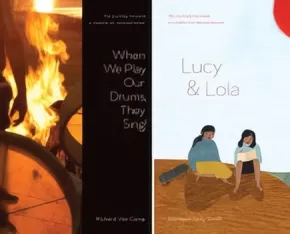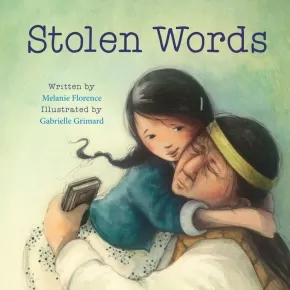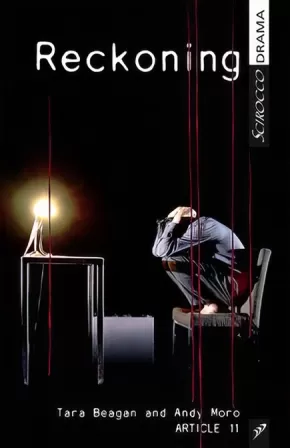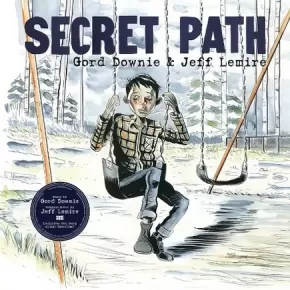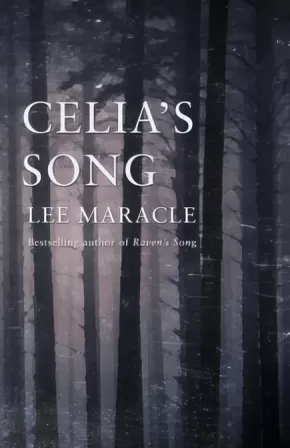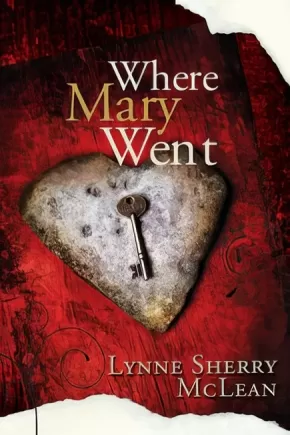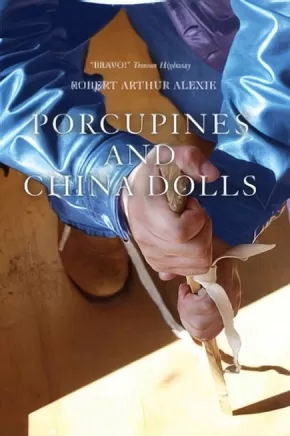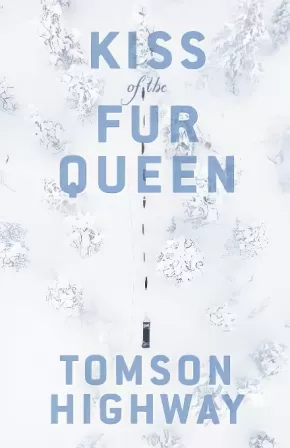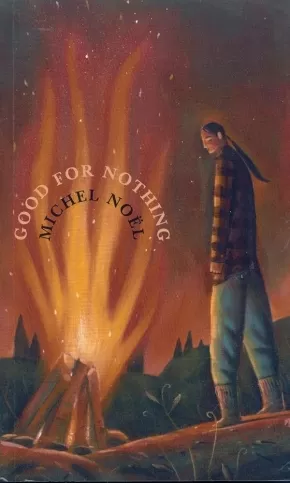
Fiction
16
-
24
of
24 Results;
Sort By
Go To
of 2
The Journey Forward, A Novella On Reconciliation
$13.99
Artists:
Format:
Paperback
Text Content Territories:
Indigenous Canadian;
ISBN / Barcode: 9780991678266
Synopsis:
Synopsis:
Two award-winning voices.
Two stories on Reconciliation.
Two amazing covers.
One unforgettable book.
The Journey Forward, A Novella On Reconciliation:
When We Play Our Drums, They Sing!
by Richard Van Camp
This the story of 12-year-old Dene Cho, who is angry that his people are losing their language, traditions, and ways of being. Elder Snowbird is there to answer some of Dene Cho’s questions, and to share their history including the impact Residential schools continue to have on their people. It is through this conversation with Snowbird that Dene Cho begins to find himself, and begins to realize that understanding the past can ultimately change the future.
Tessa Macintosh’s wonderful photographs are featured on the cover and interior of this memorable story.
The Journey Forward, A Novella On Reconciliation:
Lucy & Lola
by Monique Gray Smith
Lucy and Lola are 11-year-old twins who are heading to Gabriola Island, BC, to spend the summer with their Kookum (grandmother) while their mother studies for the bar exam. During their time with Kookum, the girls begin to learn about her experiences in being sent — and having to send their mother — to Residential school. Ultimately, they discover what it means to be inter-generational survivors.
Award-winning illustrator Julie Flett created the amazing cover illustration and interior spot art that perfectly suit this engaging novella.
Educator Information
Recommended for Grades 5-8 for the following subject areas: English Language Arts, Social Studies.
Stolen Words
$21.95
Artists:
Format:
Hardcover
Text Content Territories:
Indigenous Canadian; First Nations; Cree (Nehiyawak);
ISBN / Barcode: 9781772600377
Synopsis:
Synopsis:
A little girl helps her grandfather regain the language taken from him as a child.
The story of the beautiful relationship between a little girl and her grandfather. When she asks her grandfather how to say something in his language – Cree – he admits that his language was stolen from him when he was a boy. The little girl then sets out to help her grandfather find his language again. This sensitive and warmly illustrated picture book explores the intergenerational impact of the residential school system that separated young Indigenous children from their families. The story recognizes the pain of those whose culture and language were taken from them, how that pain is passed down, and how healing can also be shared.
Awards
- 2018 Ruth and Sylvia Schwartz Children's Book Winner
Reviews
"Florence's tender text soothes the harsh reality of having Native language stolen while attending one of Canada's former residential schools for Indigenous children. Grimard's equally emotive illustrations show the stark realities of the experience in symbolic images... Unforgettable. (Starred Review)" — Kirkus Reviews
"... a sobering ode to [Florence's] heritage, presented through eyes filled with love and hope... Word by word, her story—written in honor of her Cree grandfather—is a significant step toward forever healing. (Starred Review)" — Shelf Awareness
"...an emotionally charged series of interactions and memories that are pure Melanie Florence. They will astound readers and sadden them, while encouraging healing and learning without shame or anger." — CanLit for Little Canadians
"Stolen Words would be an asset to any home or school library. It is a very powerful tool to educate both Indigenous and non-indigenous readers about the long lasting effects of the residential school system." — Anishinabek News
"An emotional read, as the illustrations show mothers waving goodbye to their children and words being lost. As Grandfather revisits his native first language, the words fly back.... Recommended." — School Library Journal
"This sensitive, beautifully illustrated picture book deftly explores the inter-generational impact of Canada's residential school system... Stolen Words is unreservedly and emphatically recommended for family, preschool, elementary school, and community library picture book collections." — Midwest Book Review
Educator Information
Recommended for ages 6 to 9.
This resource is also available in French: Les mots voles
This resource is also available in English and Plains Cree as kimotinâniwiw itwêwina / Stolen Words
Stolen Words was the winning manuscript from Second Story Press' 2015 Aboriginal Writing Contest. Melanie Florence has been recognized for her ability to write about Indigenous history and culture with sensitivity and compassion, and Quebec artist Gabrielle Grimard's illustrations perfectly capture the spirit of the story.
Additional Information
24 pages | 8.50" x 8.50"
Reckoning
$15.95
Format:
Paperback
Text Content Territories:
Indigenous Canadian;
ISBN / Barcode: 9781927922262
Synopsis:
Synopsis:
Reckoning is a triptych of three short plays: Witness is a dance-movement piece featuring a Truth and Reconciliation Commissioner who unravels as he confronts the brutal testimony of residential school survivors; in Daughter, the daughter of a teacher who was accused of rape seduces her father's accuser; and Survivor is a solo piece about a man preparing to commit suicide as a protest against the insufficiencies of the reconciliation process.
Agonizing, poignant, theatrical, hilarious, and true, Reckoning illuminates the difficulties of trying to come to terms with our country's painful past.
Educator Information
Recommended for grade 11 and 12 students for courses in performance arts, language arts, and English. Also useful for college and university courses in these areas.
Caution: explicit language and discussion of sexual and physical abuse.
Additional Information
66 pages | 5.00" x 8.00"
Secret Path
$26.99
Format:
Paperback
Text Content Territories:
Indigenous Canadian;
ISBN / Barcode: 9781501155949
Synopsis:
Synopsis:
Secret Path is a ten song album by Gord Downie with a graphic novel by illustrator Jeff Lemire that tells the story of Chanie “Charlie” Wenjack, a twelve-year-old boy who died in flight from the Cecilia Jeffrey Indian Residential School fifty years ago.
Chanie, misnamed Charlie by his teachers, was a young boy who died on October 22, 1966, walking the railroad tracks, trying to escape from the Cecilia Jeffrey Indian Residential School to return home. Chanie’s home was 400 miles away. He didn’t know that. He didn’t know where it was, nor how to find it, but, like so many kids—more than anyone will be able to imagine—he tried.
Chanie’s story is Canada’s story. We are not the country we thought we were. History will be re-written. We are all accountable. Secret Path acknowledges a dark part of Canada’s history—the long-suppressed mistreatment of Indigenous children and families by the residential school system—with the hope of starting our country on a road to reconciliation. Every year as we remember Chanie Wenjack, the hope for Secret Path is that it educates all Canadians young and old on this omitted part of our history, urging our entire nation to play an active role in the preservation of Indigenous lives and culture in Canada.
The next hundred years are going to be painful as we come to know Chanie Wenjack and thousands like him—as we find out about ourselves, about all of us—but only when we do can we truly call ourselves, “Canada.”
Proceeds from Secret Path will be donated to The Gord Downie Secret Path Fund for Truth and Reconciliation via The National Centre for Truth and Reconciliation (NCTR) at The University of Manitoba.
Educator Information
Recommended resource for English First Peoples grades 10-11 for units on Childhood through the Eyes of Indigenous Writers and First Steps - Exploring Residential School and Reconciliation through Children's Literature.
Note: This resource is not considered an authentic First Peoples resource.
Additional Information
96 pages | 12.00" x 12.00"
Celia's Song
$22.95
Format:
Paperback
Text Content Territories:
Indigenous Canadian; First Nations; Nuu-chah-nulth (Nootka);
ISBN / Barcode: 9781770864511
Synopsis:
Synopsis:
Mink is a witness, a shape shifter, compelled to follow the story that has ensnared Celia and her village, on the West coast of Vancouver Island in Nu:Chahlnuth territory. Celia is a seer who - despite being convinced she's a little "off" - must heal her village with the assistance of her sister, her mother and father, and her nephews. While mink is visiting, a double-headed sea serpent falls off the house front during a fierce storm. The old snake, ostracized from the village decades earlier, has left his terrible influence on Amos, a residential school survivor. The occurrence signals the unfolding of an ordeal that pulls Celia out of her reveries and into the tragedy of her cousin's granddaughter. Each one of Celia's family becomes involved in creating a greater solution than merely attending to her cousin's granddaughter. Celia's Song relates one Nu:Chahlnuth family's harrowing experiences over several generations, after the brutality, interference, and neglect resulting from contact with Europeans.
Educator Information
Grade 11/12 English First Peoples resource for the unit Further Steps toward Reconciliation.
Additional Information
280 pages | 5.50" x 8.50"
Where Mary Went
$22.95
Format:
Paperback
Text Content Territories:
Indigenous Canadian;
ISBN / Barcode: 9781894778961
Synopsis:
Synopsis:
"Spotting her target, the lady in uniform took Gmiwan by the arm and began to shuffle him toward Mary. Mary gave herself a shake to break the spell, and with Sonny pasted to her side, took a few steps forward. Obviously something had happened to Gmiwan."
Moving back through three decades, through World War II, the Depression and years spent in the horrific residential Mohawk Institute, Where Mary Went is the first half of a two-volume work of a brilliant and compelling new First Nations storyteller. This is the story of Mary Fisher, an engaging young girl who turns into a tough yet tender young wife and mother. It is also the story of the men in her life: her father, a proud and gentle man who loses his children through no fault of his own; her husband Gmiwan, a sensitive artist not made for the rigors of war; and Tom Dunsby, the mayor of Jackson, whose unrequited love for Mary knows no bounds. Tender, tragic and beautifully poignant, set against the backdrop of fears of displacement, hunger and death, Where Mary Went is a sensual novel of relationships that offers up inspiring revelations, heart-breaking twists and boundless expression of spirit.
Additional Information
|
Porcupines and China Dolls (1 in stock, in reprint)
$24.95
Format:
Hardcover
Text Content Territories:
Indigenous Canadian; First Nations; Dene; Dinjii Zhuh (Gwich'in);
ISBN / Barcode: 9781894778688
Synopsis:
Synopsis:
James Nathan and Jake Noland have been best friends for their entire lives. Like most residents in their small northern Gwich’in community, they like to get drunk, get high and sleep around. It helps them forget the past—a horrific past full of painful memories. At times just one bullet to the temple away from a self-inflicted death, James and Jake fumble through life, tormented and haunted by the demons of their residential school abuse.
The decision by one man to publicly disclose his abuse causes upheaval within the community and forces other victims to consider their options: either share their secret and begin healing, or maintain their silence and suffer alone. Raw and gripping, Porcupines and China Dolls is impossible to put down.
Educator Information
Resource for English First Peoples 11-12.
Additional Information
312 pages | 6.00" x 9.00"
Kiss of the Fur Queen
$22.00
Format:
Paperback
Text Content Territories:
Indigenous Canadian; First Nations; Cree (Nehiyawak);
ISBN / Barcode: 9780385697217
Synopsis:
Synopsis:
Kiss of the Fur Queen is a powerful and beautiful tale of siblings and tricksters, culture and trauma, and finding yourself in a world that tries to tell you who you are.
Born into a magical Cree world in snowy northern Manitoba, Champion and Ooneemeetoo Okimasis are all too soon torn from their family and thrust into the hostile world of a Catholic residential school. Their language is forbidden, their names are changed to Jeremiah and Gabriel, and both boys are abused by priests.
As young men, estranged from their own people and alienated from the culture imposed upon them, the Okimasis brothers fight to survive. But wherever they go, the Fur Queen--a wily, shape-shifting trickster--watches over them as they fulfill their destiny to become artists.
Educator Information
Grade 11/12 English First Peoples resource for the unit Further Steps toward Reconciliation - Understanding Residential Schools through Text.
Note: This novel contains mature and challenging material (profanity, coarse language, depictions of sex, sexual abuse, violence, etc.).
This resource is also available in French: Champion et Ooneemeetoo.
Additional Information
328 pages | 5.17" x 7.98"
Good For Nothing
$14.99
Format:
Paperback
Text Content Territories:
Indigenous Canadian; Métis;
ISBN / Barcode: 9780888996169
Synopsis:
Synopsis:
The year is 1959, and fifteen-year-old Nipishish returns to his Métis reserve in northern Quebec after being kicked out of residential school, where the principal tells him he's a good-for-nothing who, like all Indians, can look forward to a life of drunkenness, prison and despair.
The reserve, however, offers nothing to Nipishish. He feels even more isolated here. He remembers little of his late mother and father. In fact, he seems to know less about himself than the people at the band office. He must try to rediscover the old ways, face the officials who find him a threat, and learn the truth about his father's death.
Adolescents will find inspiration in his courage to reclaim his identity and claim his rightful place on the reserve. The book also provides great insight into the roots of many ongoing Indigenous issues.
Awards
- Winner of the Geoffrey Bilson Award for Historical Fiction
Educator Information
Recommended Ages: 12-15.
Curriculum Connections: Indigenous Studies, History, Geography, Social Sciences, English
Additional Information
256 pages | 4.25" x 7.00" | Written by Michel Noel. Translated by Shelley Tanaka.
Sort By
Go To
of 2

